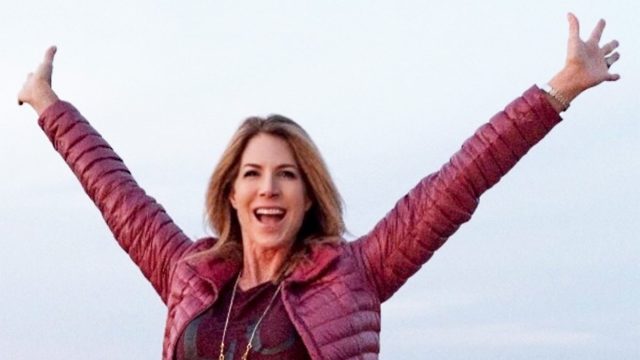I'm 60 and These Are 25 Anti-Aging Habits I Wish I Started Doing Sooner
Do you want to age gracefully? JJ Virgin is a triple-board certified nutrition expert, four-time best-selling author, and fitness influencer who shares helpful tips and tricks about aging and staying in shape. "No one could have prepared me for turning 50. Now, if they had, I would've just turned 50 way sooner," she jokes in one of her viral YouTube videos. "I mean, this decade has been an amazing time of possibility and reinvention, and I'm expecting my sixties to be even better." In the video, she reveals 25 anti-aging habits she wishes she knew sooner.
Having a Positive Attitude Is Key
"Having a positive attitude is super important in creating your best life at 50 and beyond," says JJ, citing a study, Longevity Increased by Positive Self-Perceptions of Aging. "Here's what it said: this is wild. It turns out that a positive attitude gives you seven and a half more years of life, even when I adjusted for age, gender, socioeconomic status, loneliness, and functional health covariates."
Find Role Models
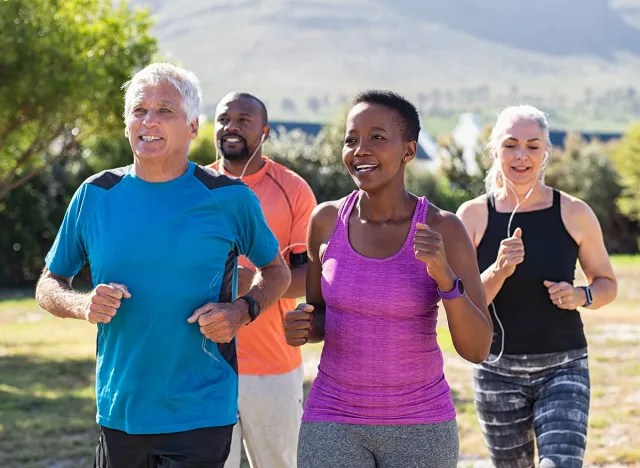
"My first step in preparing for my 60th was to get fired up about it and to set new goals," she says. Finding role models helped her. Her list includes J-Lo, Dolly Parton, Diana Ross, and Elon Musk's mom, "who got her first modeling cover at age 70," she points out.
Remember That the "Best Stuff Happens in the Fourth Quarter"

Recently, I was talking to my buddy, Dr. Daniel Ehman, and he reminded me that so often, the best stuff happens in the fourth quarter of sports. So I am now focused on making sure that I can play full out in my seventies, my eighties, my nineties, and beyond, and that I'm doing this daily to ensure that my body and brain are built to last.
And, Mindset Is Everything
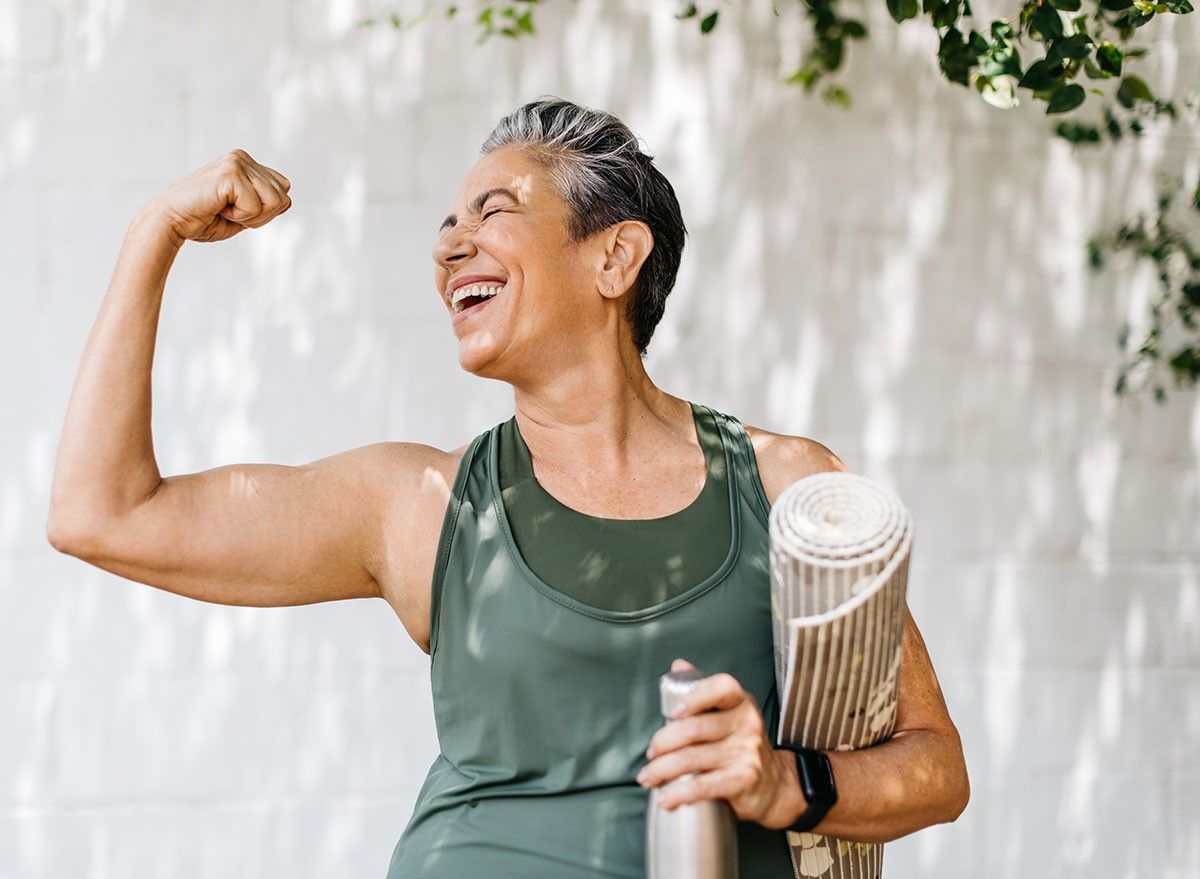
"Mindset is everything," she says. "I have amazing role models to help me here. So, I have amazing women that I learn from and hang out with. Mary Morrissey, Sam Horn, Sherry Salada. These are women who've gone before me and are living purpose-driven, driven lives."
Set Career Goals
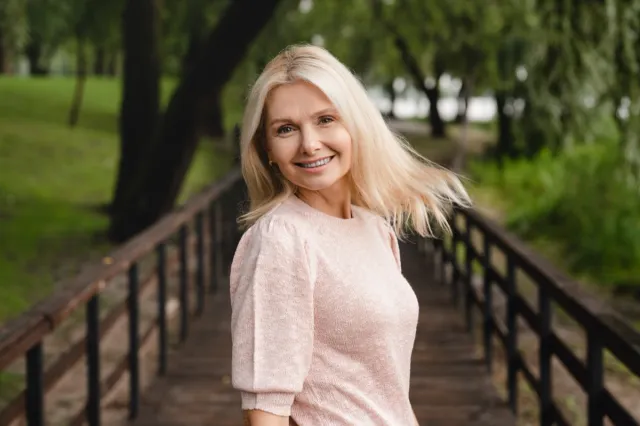
"I also have career goals that stretch and excite me," she continues. "I'm actually more excited about my career now than ever, and I've been working in the wellness world in one form or another for 40-plus years."
Also, Set Experience Goals

Another essential area to set goals? "I set some experience goals over the next decade of what I want to do, where I wanna travel to," she says.
And, Fitness Goals
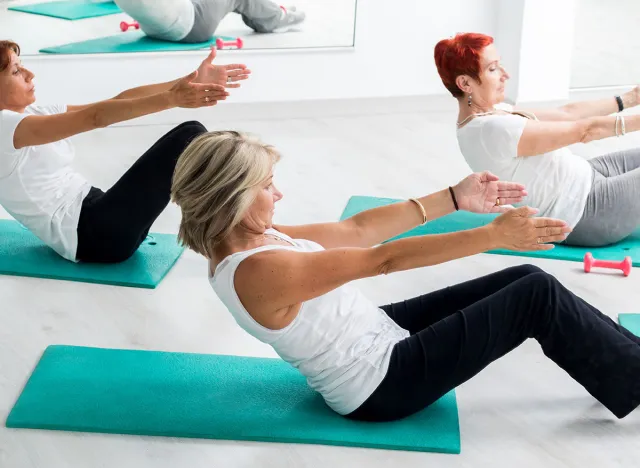
"I also set some goals on fitness, and this is a big one," she says. "I think one of the biggest challenges that happens to us is getting into these ruts. And the thing is, as you're aging, if you're not continuing to progress in your fitness, you are going to be declining."
Get Out of Your Fitness Comfort Zone
She also recommends trying workouts that get you out of your comfort zone. "In two days, I am going to do goat yoga," she says. "I took up rucking; I've been lifting way heavier weights."
Set Relationship Goals
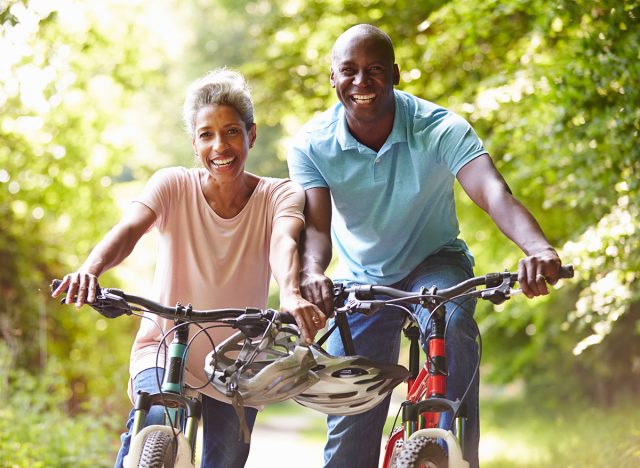
She also set relationship goals. "When you start to look at this, you go, 'Who are the people that I really wanna spend time with? You know, who and how do I get to make sure that I'm spending more time with my family? And how do I make sure I'm getting to spend that really good quality time with my hubby?'
And, Also Set Spiritual Goals
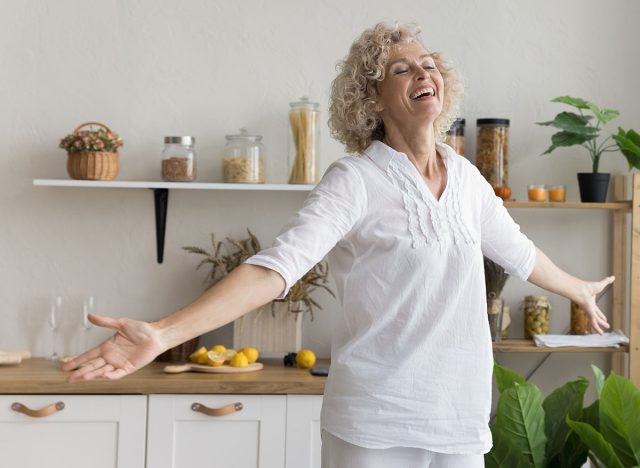
"I also set spiritual goals," she continues. "You know, how would you like to continue to grow? Someone asked me the other day what my life was like and how things are working so well with my husband. What would I give for my relationship success?" She explains that they go to leadership councils together, read together, and help each other reach spiritual goals.
Try New Activities
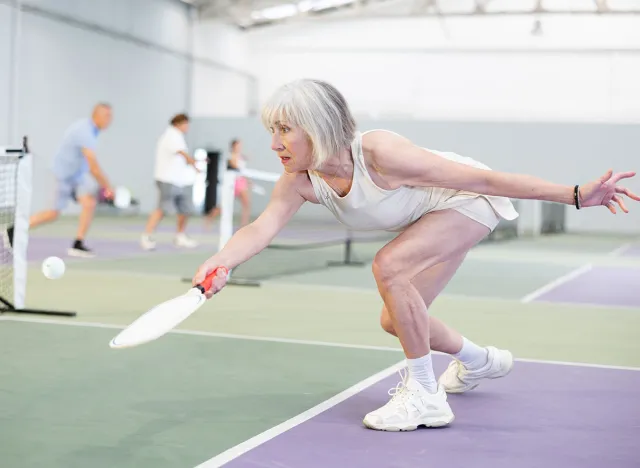
She recommends "pushing yourself in new activities to avoid getting into a rut. "I'm going walk through some of the things that I've done to see if they inspire you as well because I've really doubled down on wellness and self-care."
RELATED: 10 Protein Rules for Shedding Pounds Every Day
Take Baths
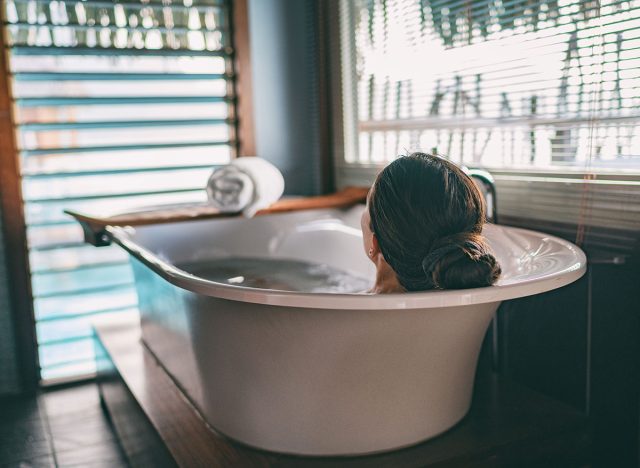
"One of the things that happens when we're 40 plus is we have to really take care of our nervous system. And so I actually started to gamify my self-care, and I got over this whole guilty feeling of like, 'Oh my gosh, I'm taking a hot bath, and I'm not working.'"
Get a Body Scan
"The first thing that I did was a deep dive assessment using a DEXA," she says. This enabled her to look at everything from her skeletal muscle and bone density to fat mass. "What I really wanna make sure of is that right now, I'm focused on putting on as much muscle as humanly possible," she says.
And Lift Heavy Weighs
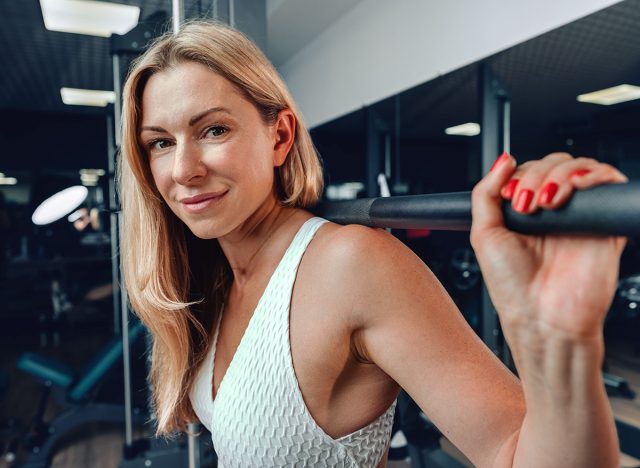
"I set some really ambitious goals for myself in terms of resistance training, lifting really heavy weights, and even adding in some things like agility training and plyometric stuff. Not fun, I will tell you, not fun at all. But boy, I'm really seeing its benefits. It's fun to start challenging again."
RELATED: I'm 50+ and These 7 Fat-Blasting Habits Keep Me in the Best Shape of My Life
Get Better Sleep

"The other thing that I've been focusing on is sleep," she says, adding that she isn't a "genetically" good deep sleeper. So, she incorporated healthy sleep habits, like no tech before bed and limited alcohol intake.
Give Yourself "Self Care Points"
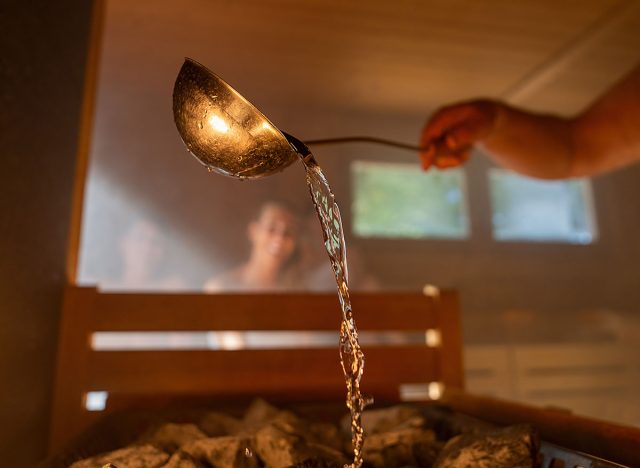
She also started giving herself self-care points. "I wanna earn at least three self-care points a day," she says. "Here's what counts as self-care: The cold plunge meditation, working out journaling, reading a positive book, a personal development book, taking a hot Epsom salts bath, doing my red lights, using my sunlight and sauna, going for a walk after dinner." Her goal is to get three per day or 21 a week.
Give Yourself Fitness Tests
She also really assessed where she was with regard to fitness. "I did a grip strength. I got a hand dynamometer grip dynamometer, I did my grip strength, and I checked how many push-ups I could do," she said. She also did walking and cardio tests.
Do Yoga
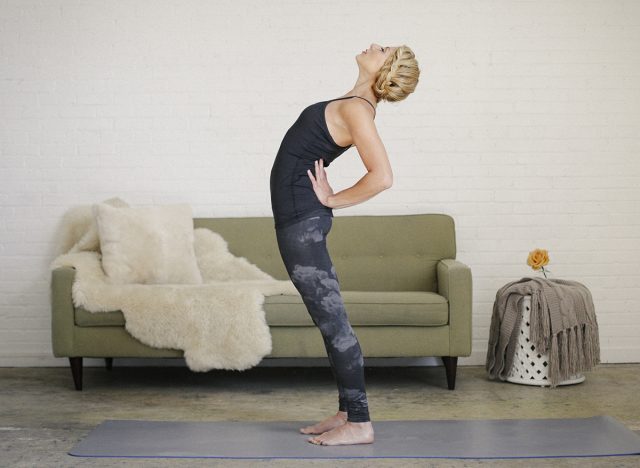
She also prioritized "balance, flexibility, strength, stamina, and agility" by doing yoga. "I'm now working on flexibility." She does yoga "at least twice a week," she says.
Do Cardio
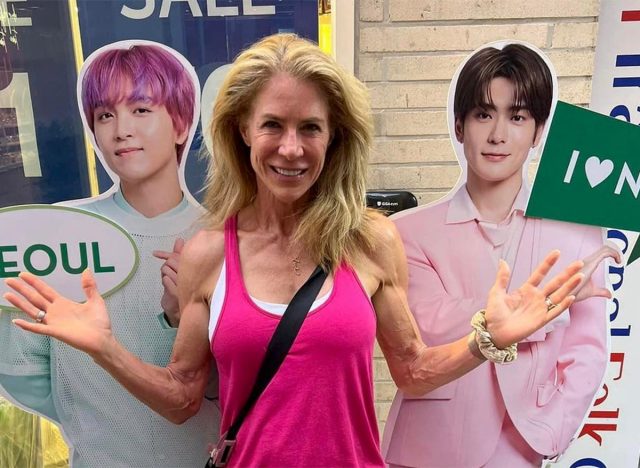
She makes sure to do cardio using her StairMaster and Peloton "and I've been adding in some jump training and agility training," she adds. "I added in some sprint training."
Start Eating Before You Exercise
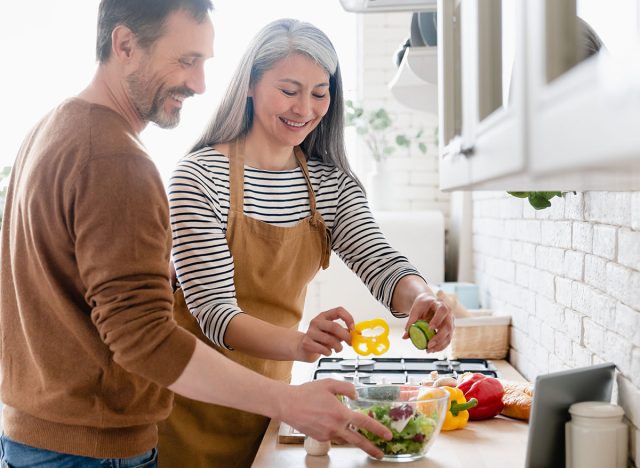
"I also stopped my fasted workouts. I started eating an hour before I went and worked out," she reveals.
RELATED: I Got Into the Best Shape of My Life at 50 by Following These 6 "Basics"
Try Rucking
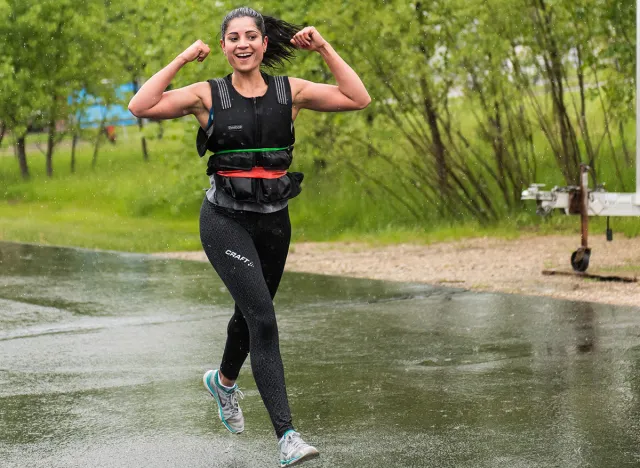
She goes for a walk after dinner and "also added in rucking," she says. "That is where you put a vest on a weighted vest. This is a super cool thing because it instantly adds more workload, and it's also great for your skeleton because it puts stress on your bones."
Count Macros

As for diet, she "decided I was gonna track my macros to make sure that I'm getting the protein I need because, of course, as we age, we get anabolic resistance," she says. We need more protein, not less. So, my goal is to consume 150 grams a day divided into three meals. So you know, 30 to 50 grams a meal. But basically, I'm hitting about 50 at each meal.
Practice Good Food Diversity
She also makes sure to "have a really good diversity of my non-starchy vegetables and fruit," she adds. "I actually was not really good about eating fruit. So, I've been getting two fruits a day and about ten servings of non-starchy vegetables a day. And that's really for microbiome."
Carb Cycle
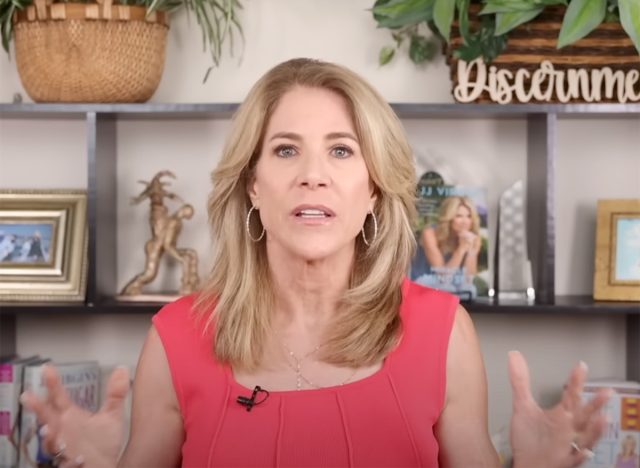
"I'll cycle the carbs up a little bit if I'm working super duper hard," she adds. "Generally, I don't eat much in the way of the starchier carbs. I might do that once a week."
RELATED: I Hit 60, and These Daily Habits Keep Me Fit and Feeling 20 Years Younger
Creatine
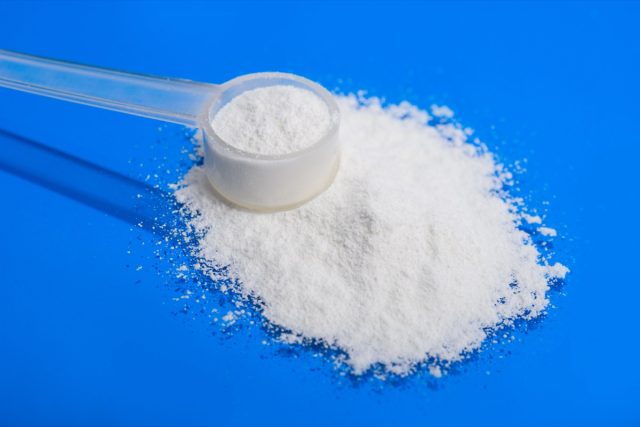
She maintains that taking creatine monohydrate was also a game changer. "I think anyone 40 plus should be on creatine, especially if you're a woman" or a vegan, she adds. She takes 5 grams a day. And if you enjoyed this article, take advantage of these 20 Superfoods for People Over 50.
